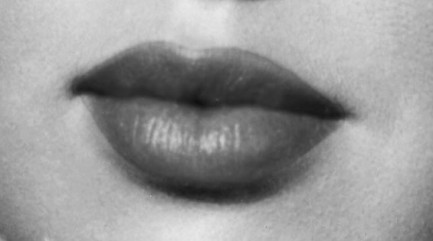 I'm starting to get a very bad feeling about this. 
This beautiful dust jacket for Mark Derby's The Tigress was painted by the very talented British artist John Rose for William Collins Sons & Co. in 1959. You'll remember that we already did a deep dive into Mark Derby's Womanhunt a bit ago. This is the same novel under its original title. Interesting, isn't it, that for U.S. readers the decision-makers at Ace Books thought Womanhunt was a better title? In any case, it's a very good novel.
 Sights, sounds, and sentiments from the thirty-four countries that made up the Europe of the time. 
Above is the cover of the July 1967 issue of Continental Film Review, a magazine produced by London based Eurap Publishing, which updated readers on the latest developments in European cinema. This issue focuses on the Netherlands, Yugoslavia, Sweden, Greece, Italy, and the Cannes Film Festival.
Here's an interesting quote from within: An indication of Italy's mammoth production appeared in an Italian trade journal a few weeks back which listed thirty-eight films premiered in the previous few weeks, seventy-six ready to be premiered, twenty being edited, forty-four in production, twenty-one about to start shooting and thirty-one being prepared, making a total of 230 films (including, of course, co-productions).
You probably think that's an enormous number, but last year Italy released 356 films. It's amazing how much there is to see from other countries if you care to look, and that's largely what Continental Film Review was about. We have twenty-plus scans below, and other issues scattered here and there in places around the website.
                         
 Look at that view, men! Just think how much money a trip like this would cost us if we were civilians! 
Donald Downes' World War II combat and espionage novel The Scarlet Thread originally appeared in 1953, with this Panther Book edition coming in 1959, adorned with cover art from an unknown. Like many mid-century war novelists, Downes saw it all firsthand. He was in the Office of Naval Intelligence (ONI), the British Security Coordination (BSC), and the OSS (we don't need to decipher that one, right?), and saw action against the fascists in Italy and Egypt. This novel, his first, draws on those experiences in telling the story of an aviator sent on a mission to eliminate a suspected double agent. Its French translation won Downes the 1959 Grand Prix de Littérature policière. Mission accomplished.
 ...and Wendy has stormy eyes... that flash at the sound of lies... 
This squinty and displeased looking shot once again shows Wendy Barrie in a promo made for her drama I Am the Law. It's one of more than fifty movies she made, along with 1932's The Barton Mystery, 1934's Murder at the Inn, 1936's Indy 500 themed Speed with James Stewart, 1939's The Witness Vanishes, et al. The shot dates from 1938 and follows one we shared a while back. You can see that one here.
 She could be Ursula Andress. 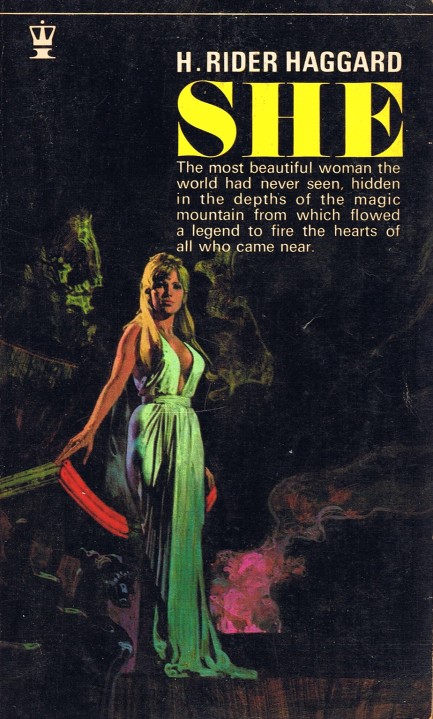
Above: one of many covers for H. Rider Haggard's all-time classic She, aka She: A History of Adventure, about the cruel, beautiful, and powerful ruler of a lost world. We chose this one because the art is based on the 1965 movie adaptation starring Ursula Andress, as you can discern at a glance. And if not, we added an Andress shot below from the film for comparison's sake. You wouldn't quite call this paperback edition from London based Hodder & Stoughton a tie-in—the movie came out in 1965 in Britain, whereas the paperback is from 1968. But Andress never goes out of style. You could probably put her on a book cover now and it would sell like potato chips. We're going to screen her version of She in a bit, and report back. We already checked out one of the other dozen versions, 1935's effort starring Helen Gahagan, which you can read about here if you're curious. 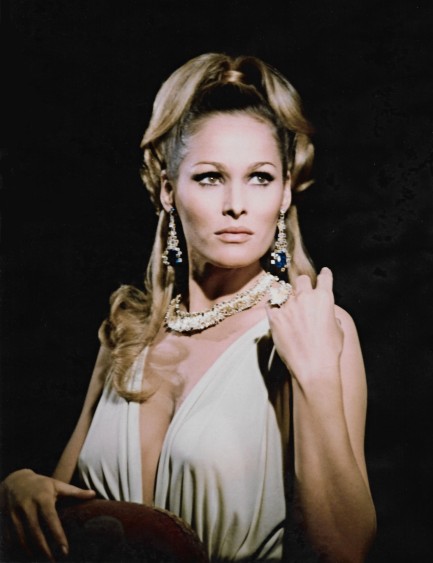
 It's a beautiful Window even if it doesn't illuminate the identity of the cover artist. 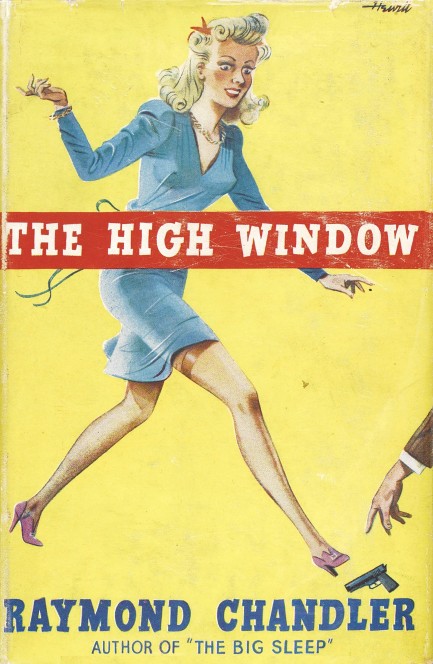
Above: a cover scan of Raymond Chandler's thriller The High Window. This book sold on Sotheby's a while back for more than 5K. It was published in 1943 in identical editions by British imprint Hamish Hamilton and Australia's George Jaboor with cover art that's signed but uncredited inside. It's possibly the work of British painter John Hewitt. He was born in 1922, which would make this an (extremely) early effort. But maybe he was a prodigy. With connections that could get him into the commercial art scene by age twenty-one. Okay, no. Alternatively, this could be the work of Don Hewitt, a British painter born in 1904. He repatriated with his parents to the U.S. in 1907, but could have later worked for an across-the-pond publisher, we suppose. Publishing continued there even during World War II. How Hewitt got his art to London we can't speculate. So, probably not him either. Call it unattributed, then. If you want to know what The High Window is about, check our earlier musings here.
 The return of the dragon. 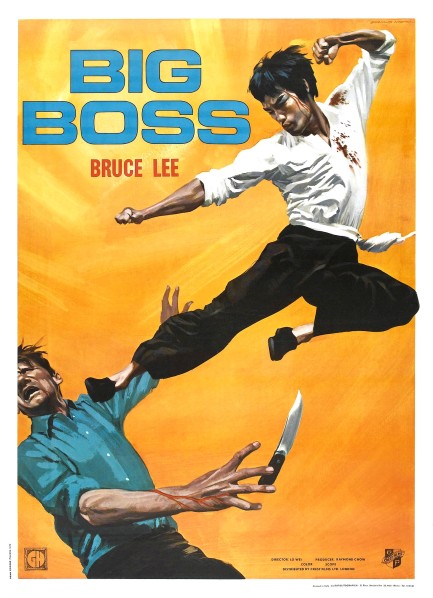 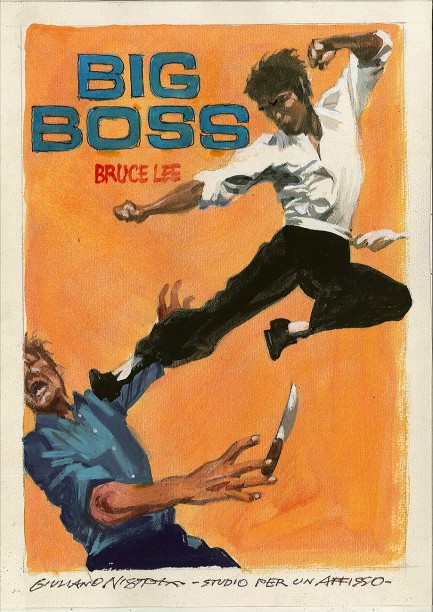
A while back we shared two Italian posters for the Hong Kong action flick Tang shan da xiong, aka The Big Boss. Those were painted by Averado Ciriello, and one of them, with star Bruce Lee depicted as moving so fast he had seven blurry arms, brought to mind those moments in The Matrix when Neo and Mr. Smith fight at mindbending speed. We're looking today at more art from the movie. The above efforts—a finished poster and a preliminary study—were painted by Italian artist Giuliano Nistri for the film's British release by Crest Films. We included the study because we wanted to highlight a website that you should visit, where you can see more of the same and gain a greater appreciation for Nistri's work. It's at this link. Tang shan da xiong premiered in England today in 1971.
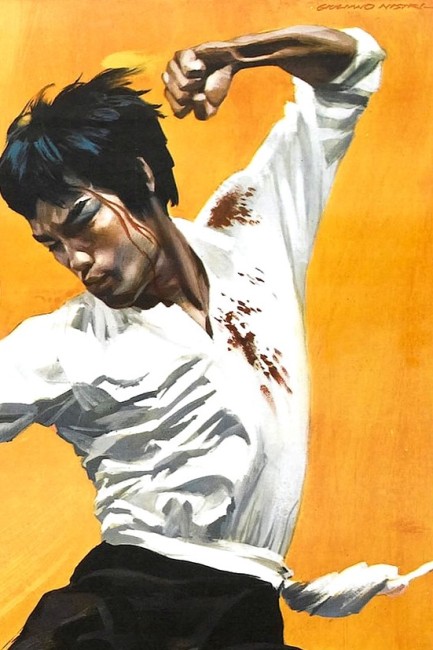
 When she gets them on the hook they never get off. 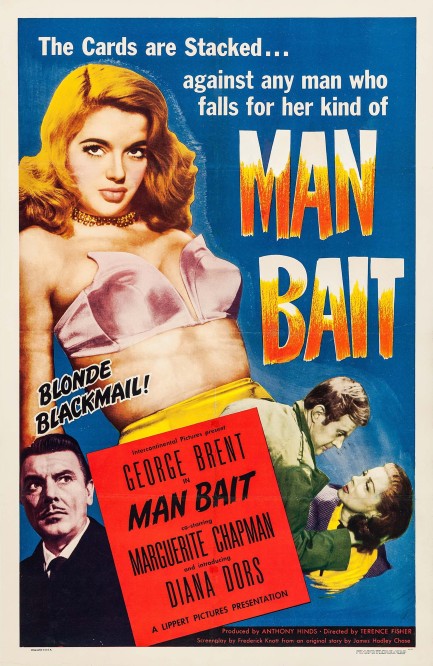
The beautiful photo-illustrated poster you see above was made for the British drama Man Bait, featuring George Brent, Marguerite Chapman, and Diana Dors. We gave it a watch, and for some reason the opening credits say, “introducing Diana Dors,” though this was actually her thirteenth credited role. We won't try to puzzle out that mystery. Plotwise, Dors and her irresistible lips are the bait, as she's convinced by a lowlife male acquaintance to blackmail her boss out of three-hundred pounds by threatening to lie about him making an unwanted advance toward her. Unfortunately, Dors is a reluctant scam artist, which puts her at odds with her manipulative accomplice. To say that everything goes wrong for her because of this relationship is an understatement.
Overall, Man Bait is a good film. While Dors is adequate in her role (she was still only twenty-one, despite her previous experience), Brent and Chapman, who both had dozens of films on their résumés at this point, are flawless as the blackmail victim and his loyal employee. An undercurrent of unrequited love prompts Chapman to side with Brent even though things look pretty bad for him as the plot progresses. But there's no need to be too terribly worried—the movie was made during the Hays Code censorship era, so you know crime can't pay. Sure, the Code was American, but even British productions adhered to it if they hoped to earn a U.S. release. Man Bait did when it premiered in Los Angeles today in 1952.
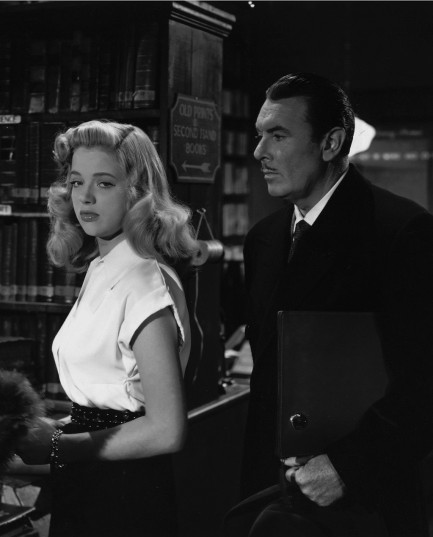 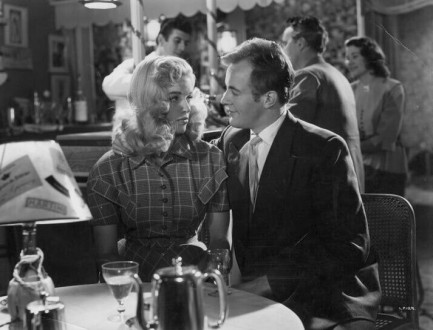 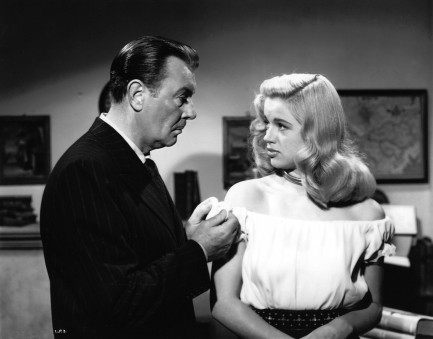 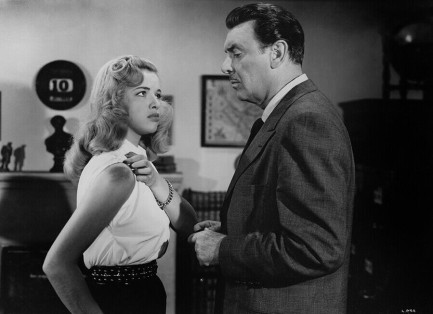 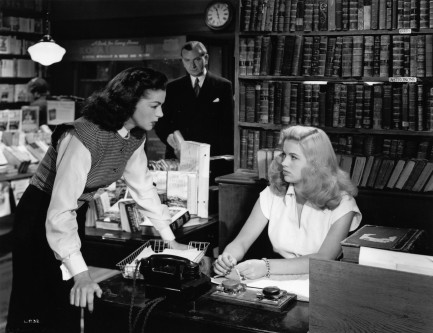 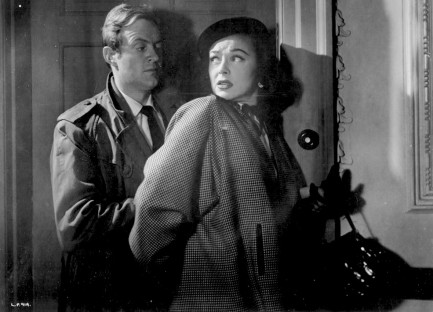 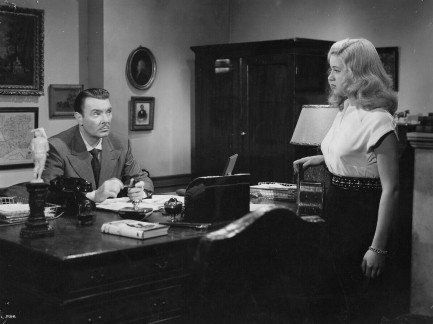 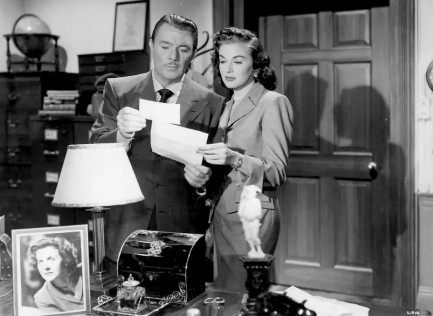 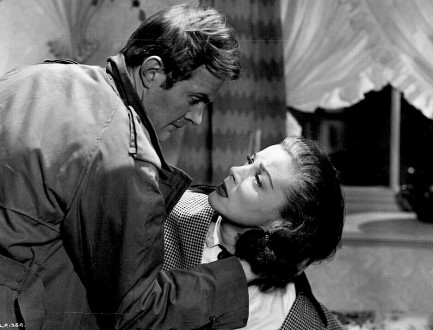 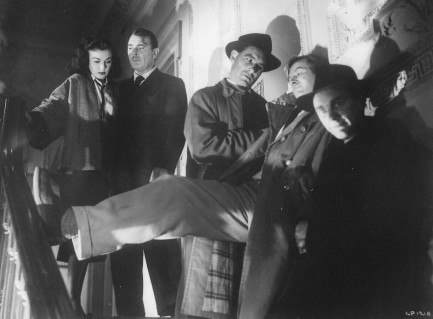
In order to qualify as a temptation there has to be a chance you can resist. These are not a temptation—they're a certainty.
 With her the outcome is always in the bag. 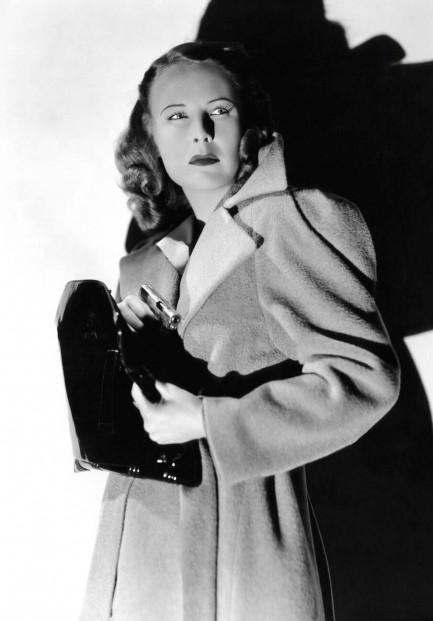
Above: a promo image of Hong Kong born British actress Wendy Barrie made for the drama I Am the Law, in which she played a newspaper columnist with, shall we say, pliable ethics. She also appeared in The Hound of the Baskervilles, Dead End, and Public Enemies, in which she played Bonnie Parker. The above shot is from 1938.
 Choose your legwear like your life depends on it. 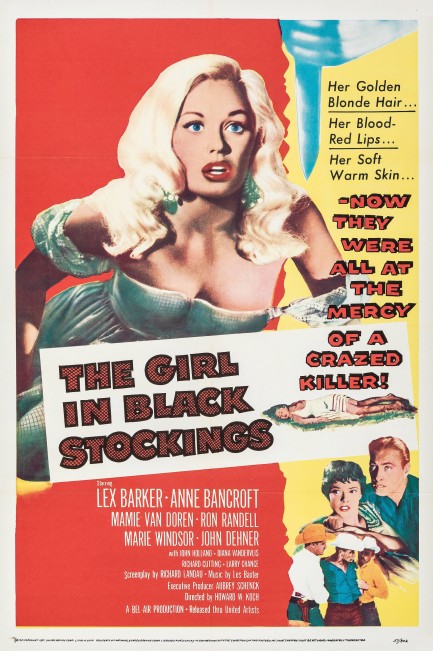
Once again, we have a poster proving that some of the worst movies had some of the best promotional art. This exemplary effort was made for The Girl in Black Stockings, which began its U.S. run today in 1957 after having its world premiere in England earlier in the year. The art showcases Mamie Van Doren, who's third billed but is the big draw. We talked about the movie last year and, shorter version, it's bad but occasionally amusing. By the way, legwear has nothing to do with the murder. The folks at Bel-Air Productions and United Artists knew they had a catchy title and simply ran with it.

|
 |

The headlines that mattered yesteryear.
2003—Hope Dies
Film legend Bob Hope dies of pneumonia two months after celebrating his 100th birthday. 1945—Churchill Given the Sack
In spite of admiring Winston Churchill as a great wartime leader, Britons elect
Clement Attlee the nation's new prime minister in a sweeping victory for the Labour Party over the Conservatives. 1952—Evita Peron Dies
Eva Duarte de Peron, aka Evita, wife of the president of the Argentine Republic, dies from cancer at age 33. Evita had brought the working classes into a position of political power never witnessed before, but was hated by the nation's powerful military class. She is lain to rest in Milan, Italy in a secret grave under a nun's name, but is eventually returned to Argentina for reburial beside her husband in 1974. 1943—Mussolini Calls It Quits
Italian dictator Benito Mussolini steps down as head of the armed forces and the government. It soon becomes clear that Il Duce did not relinquish power voluntarily, but was forced to resign after former Fascist colleagues turned against him. He is later installed by Germany as leader of the Italian Social Republic in the north of the country, but is killed by partisans in 1945.
|

|
|

It's easy. We have an uploader that makes it a snap. Use it to submit your art, text, header, and subhead. Your post can be funny, serious, or anything in between, as long as it's vintage pulp. You'll get a byline and experience the fleeting pride of free authorship. We'll edit your post for typos, but the rest is up to you. Click here to give us your best shot.

|
|























































